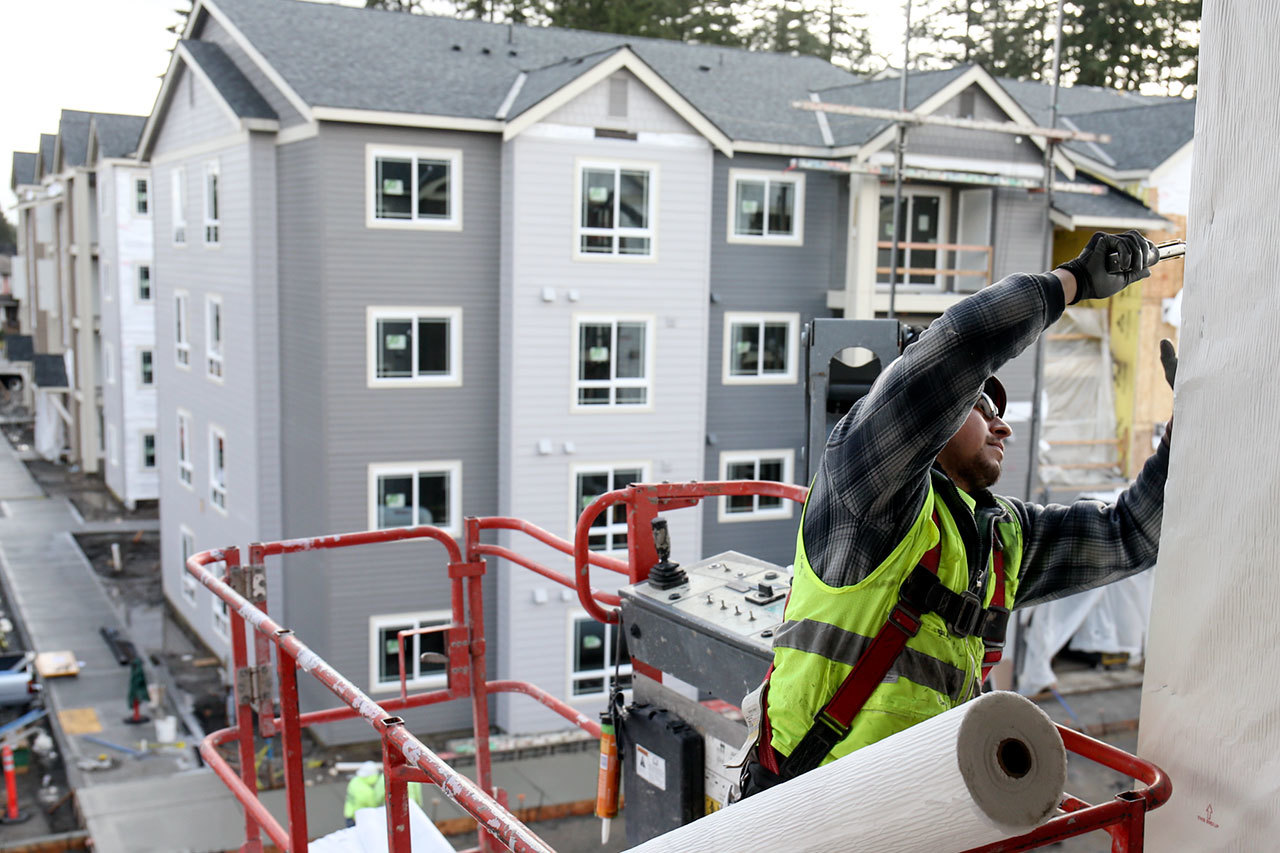In December the average rental price fell 2.9 percent across Snohomish and King counties, according to a widely heralded landlord survey by Apartment Insights/Real Data.
Was the decrease — the largest this decade — an anomaly, or the start of a downward trend? A little of both, analysts say.
In a February blog post, Dylan Simon, an executive vice president and head of the Multifamily Team at Collier’s International in Seattle, ridiculed news stories that suggested rents are “dropping significantly” in the Puget Sound area.
He noted that rent prices typically dip in the winter, and that the recent decrease came on the heels of the decade’s strongest spring. The bottom line, he stated, is that “measuring rental rates in January is worthless.”
Sean Martin isn’t so certain. He is the interim director of the Rental Housing Association of Washington, a consortium of more than 5,000 independent rental owners and managers.
“This is a little bit more than the natural slow-down at this time of year,” Martin said. “A lot of our members are saying rents are pretty stagnant.”
A rash of recent apartment construction across the region is stabilizing the market, he said. More than 2,000 rental units are being built in Snohomish County, with some 5,000 more in the planning stages.
While Snohomish County rents are unlikely to keep dropping, they will at least stop growing at a nation-leading pace, he said. Rents across the Puget Sound region have risen 48 percent over the past five years, according to Apartment Insights, and increased 4.5 percent last quarter despite the decrease in Snohomish and King counties.
“It’s not going to be the 10-percent stuff we’ve been seeing,” Martin said. “It should be a little bit more than inflation, not a lot. Something more like 3 to 5 percent.”
Snohomish County already has one of the area’s lowest average rental rates, at $1,366 for all apartment types, and an above-average 4.4 percent vacancy rate. Whether those rates remain stable depends largely on the economy.
Will there be enough jobs to draw renters for all the new units? Simon, for one, is bullish.
Economists are predicting the region will add less than 40,000 new jobs for each of the next four years, he noted. But “the Seattle/Bellevue/Everett region added 5,400 new jobs in January 2017 alone, while unemployment held steady at 3.7-percent,” he blogged. “The region’s technology engine is alive and well…For the next several years, expect job growth to outperform every prediction.”
Martin said apartment rents, construction and vacancies outside Seattle will depend on who is hiring, as well as how fast the new units can be filled.
Rental Housing Association members are talking with Everett leaders about “doing some (economic development) in the downtown core,” he said. But he added that Everett and similar suburban cities face difficult decisions in light of an historic shortage of housing supply.
Seattle, for instance, is becoming denser by permitting taller, higher-capacity multifamily buildings, he said, and enacting ordinances that hinder landlords of older, cheaper units.
“Government has to think hard about preserving existing housing,” Martin said. “We need to preserve existing affordability.”
Talk to us
> Give us your news tips.
> Send us a letter to the editor.
> More Herald contact information.

























